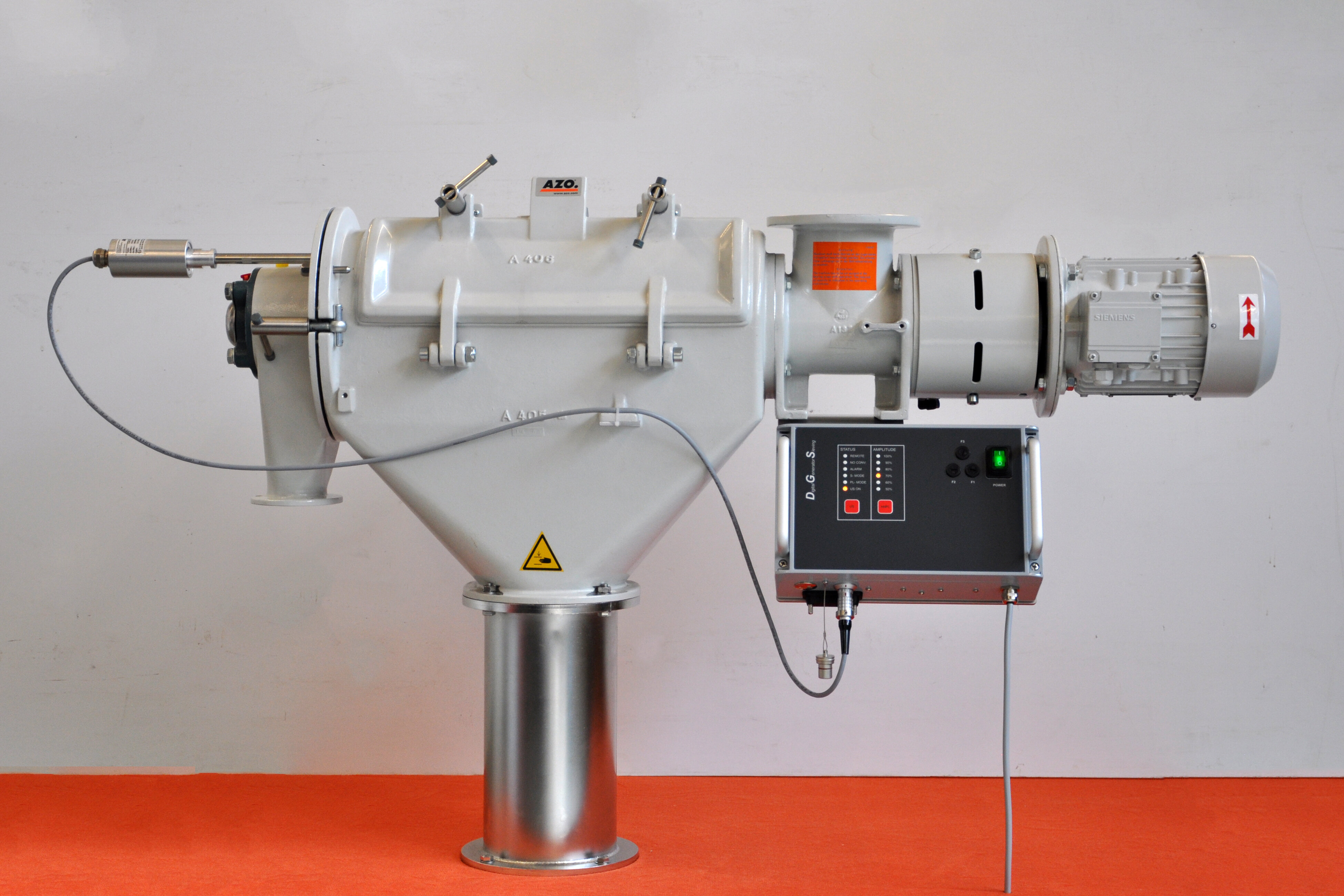
Sonic excitation of the screen mesh can be used or fitted retroactively in the AZO type E, DA, FA and RA cyclone screeners.
The use of ultrasound causes the stainless steel screen to vibrate at high frequency. These minute vibrations prevent near-size particles from sticking in the mesh of the screen fabric.
The screen mesh stays clear for longer, which in turn noticeably improves separation efficiency. This may result in an increase in screen capacity.
The screen basket needs to be removed for cleaning far less often and this significantly increases the useful life of the machine.
The material to be separated enters the cyclone screener via the flow guide and a screw feeder then conveys it into the screen chamber. Cyclone strips swirl the product through the screen mesh. Oversized material is held back by the screen mesh and ejected through the outlet for oversized material.
The ultrasound generator causes minute vibrations in the stainless steel screen, which reduce the amount of particles clogging the screen and improve separation efficiency. This in turn helps to increase intervals between cleaning and machine tooling times are reduced accordingly.
The cylindrical stainless steel wire mesh is bonded with screen rings. Threaded rods, which are passed through the screen rings without contact, are used to apply the appropriate tension to the mesh.
The sonic frequency produced by the generator is transmitted by the converter via the sonic conductor to the centre ring of the screen basket, from where it is uniformly distributed over the screen mesh that is bonded with the screen rings.
Sonic frequencies that vary automatically improve the result even further, as different resonant frequencies are covered.